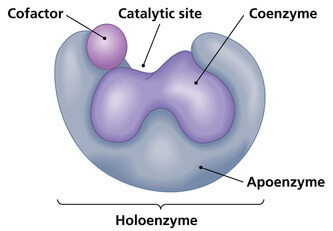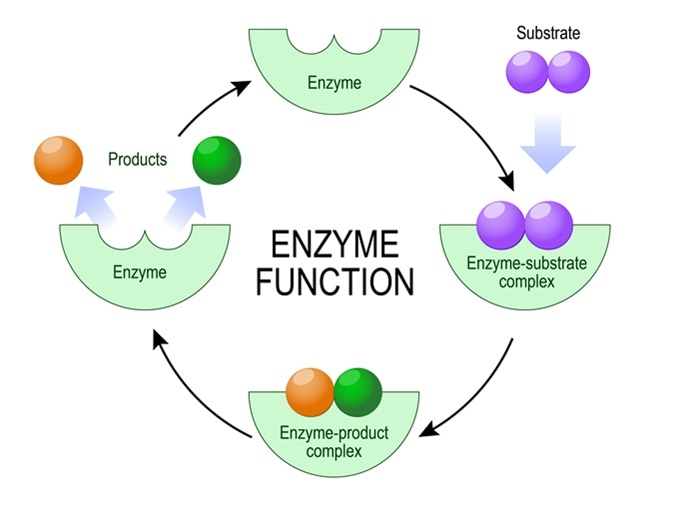Enzyme Structure Study Guide
Introduction
The human body comprises several types of cells, tissues, and organs. Our bodies emit substances to speed biological functions such as breathing, digestion, excretion, and other metabolic activities to maintain a healthy existence. As a result, enzymes play a critical role in all living beings, regulating all biological processes.
Properties of enzymes
The properties of enzymes are categorized as physical, chemical, and general properties.
Physical properties
- Enzymes act physically as colloids or as high-molecular-weight substances.
- At temperatures below the boiling point of water, enzymes are destroyed or inactivated. This process is called denaturation.
- Most enzymes in liquid media are inactivated at 60 degrees Celsius.
- Dried enzyme extract may withstand temperatures ranging from 100 to 120 degrees Celsius and even higher. As a result, enzymes are thermostable.
Chemical properties
- Enzymes are biological catalysts with catalytic characteristics.
- This suggests that enzymes have a great capacity for converting large amounts of the substrate into a product.
- Enzymes speed up the process while being unaffected by the reaction they catalyze.
- Enzyme specificity: Enzymes are very specific, which means that a specific enzyme may catalyze a specific process.
- Enzyme sucrase, for example, can exclusively catalyze sucrose hydrolysis.
General properties
- Enzymes catalyze and accelerate biological reactions.
- The activity of enzymes is affected by the acidity of the media (pH specific).
- The majority of intracellular enzymes operate at at or around neutral pH. Enzymes can speed up the reaction either way.
- All enzymes have active sites that take part in biological processes.
- At the optimal temperature, enzymes are active.
Structure of enzymes
- Enzymes are a linear chain of amino acids that form a three-dimensional structure.
- The sequence of amino acids define the structure, which in turn determines the enzyme’s catalytic activity.
- The enzyme’s structure denatures when heated, decreasing enzyme activity normally correlated with temperature.
- Enzymes are often enormous compared to their substrates, with sizes ranging from 62 amino acid residues to an average of 2500 residues seen in fatty acid synthase.
- There are a few ribozymes that act as RNA-based biological catalysts.
- Only a tiny portion of the structure is engaged in catalysis, located around the binding sites.
- The enzyme’s active site comprises the catalytic and binding sites. It interacts with proteins in complexes.
Characteristics of enzymes
- Accelerate chemical processes.
- They are quite targeted in their conduct.
- The temperature affects them.
- They are influenced by pH.
- Some catalysts catalyze reversible processes.
- Inhibitors prevent them from working.
Functions of enzymes
Enzymes help in a variety of processes in our bodies. These are some examples:
- Enzymes aid signal transduction. Protein kinase, which catalyzes protein phosphorylation, is the most frequently employed enzyme in the process.
- They break down huge chemicals into tiny ones that the body can easily absorb.
- They aid in the production of energy in the body. The enzymes involved in energy production are known as ATP synthase.
- Enzymes control the transport of ions across the plasma membrane.
- To remove non-nutritive substances from the body, enzymes undertake a variety of biochemical processes such as oxidation, reduction, hydrolysis, and so on.
- They are responsible for reorganizing the internal structure of the cell to control cellular processes.
FAQs:
1. What is the protein structure of an enzyme?
Enzymes are proteins made up of amino acids joined together in one or more polypeptide chains. The main structure of a polypeptide chain is the sequence of amino acids. This, in turn, dictates the enzyme’s three-dimensional structure, including the shape of the active site.
2. What is the secondary structure of an enzyme?
Secondary structure in enzymes refers to the interaction of closely placed amino acids in a chain (primary structure). Secondary structures are classified into two types: helical and pleated sheets.
3. Why is the structure of an enzyme important?
Most enzymes are proteins, and their structure determines their function. Before the reaction takes place, the active site of the enzyme and the correctly matched location of the substrate must physically unite. That is why enzyme structure is so crucial.
4. What is the general structure and shape of an enzyme?
Enzymes are amino acids joined together in a linear chain by amide (peptide) bonds. This is the general structure.
Sources:
- Enzyme structure and function. https://www.khanacademy.org/test-prep/mcat/biomolecules/enzyme-structure-and-function/a/enzyme-structure-and-function. Accessed 27 Dec, 2021.
- Enzymes: An integrated view of structure, dynamics and function. https://microbialcellfactories.biomedcentral.com/articles/10.1186/1475-2859-5-2. Accessed 27 Dec, 2021.
- What is an Enzyme Cofactor?. https://www.news-medical.net/life-sciences/What-is-an-Enzyme-Cofactor.aspx. Accessed 27 Dec, 2021.


